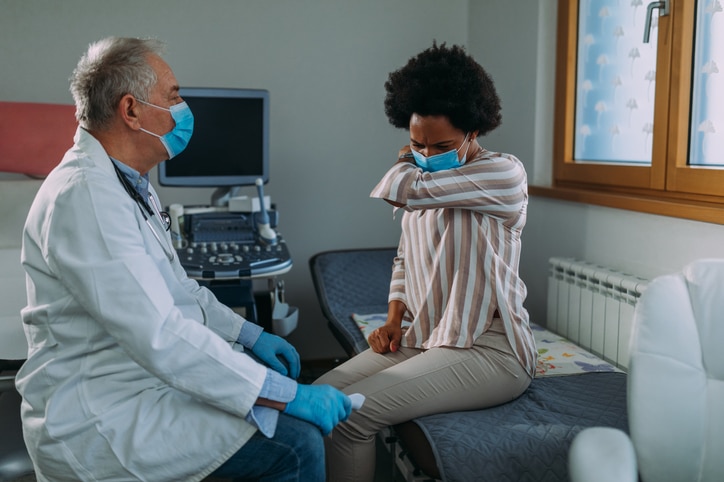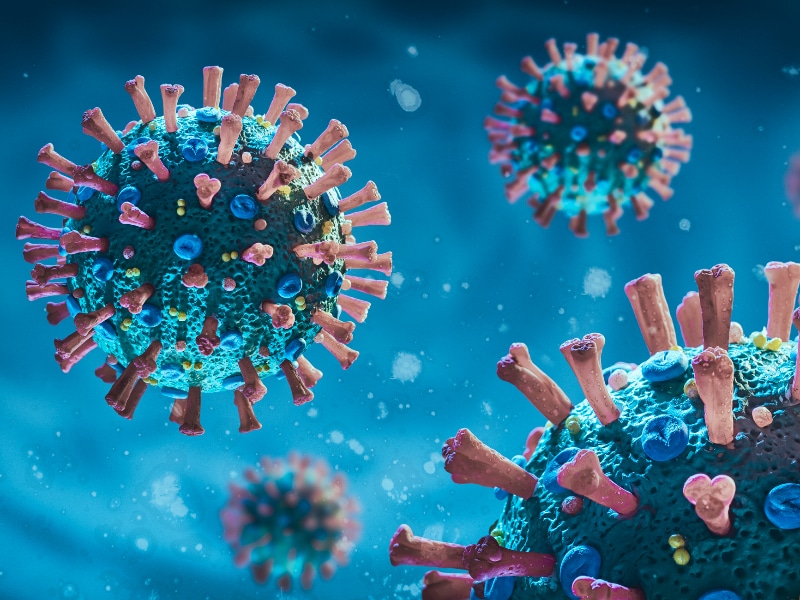Two years and counting into the pandemic, many mysteries about the virus endure, but few affect as many people as “long COVID.”
Nearly 60% of Americans — that’s 200 million of us — have been infected by COVID-19, whether we know it or not, according to research from the Centers for Disease Control and Prevention. By some estimates, millions of them are still feeling the effects long afterward – and that has physicians worried about a potential “pandemic after the pandemic.”
“If you’re three months out and you’ve still got a cough or shortness of breath, you’re looking at a situation that is more chronic,” says Les Cler, MD, FACP, CPE, chief medical officer at Methodist Dallas Medical Center. “Once you have this, you may have some trouble for a while.”
The prevalence of chronic COVID-19 is difficult to nail down since we’ve only lived with this virus since 2020, but that hasn’t stopped researchers from trying.
An analysis of 50 studies determined about a third of those infected who were never hospitalized were still feeling the effects more than a month later. About half of the COVID-19 patients who required hospitalization reported lingering symptoms, sometimes up to a year afterward.
“There will be some people that just simply will not fully recover,” Dr. Cler says.
Below, he helps us define the symptoms of long COVID, what might be causing it, and some promising treatments that may help patients overcome this condition.

HOW TO SPOT LONG COVID
The most common chronic symptoms are fatigue, shortness of breath, and “brain fog.” But the list goes on, according to the CDC:
- Cough
- Chest or stomach pain
- Headache
- Fast-beating or pounding heart (also known as heart palpitations)
- Joint or muscle pain
- Insomnia
Many experts have drawn a comparison to another mysterious — and still largely unexplained — diagnosis that made headlines in the 1980s and ’90s.
“This shares a lot of similarities with chronic fatigue syndrome,” Dr. Cler says.
Even people who had no symptoms during their infection have reported post-COVID conditions. But it’s hospitalized patients, those who suffered an acute case, who bear the brunt, Dr. Cler says.
“Severe disease is more likely to cause these conditions,” he says.
If you suspect a past bout with COVID-19 has come back to haunt you, don’t shrug it off. Seek help from a doctor because there’s a chance the infection did lasting damage.

WHAT MIGHT BE THE CAUSE
What’s behind chronic COVID-19 remains unclear. But in all likelihood, it’s not a single culprit but a “constellation of causes.” Dr. Cler says there are a few working theories:
- Organ damage: COVID-19 may be primarily a respiratory virus, but its damage extends beyond the lungs, from the kidneys and heart to the brain and larger nervous system. Dr. Cler says: “For example, the loss of smell from COVID can be due to inflammation of particular areas of the brain, which is different than the typical altered taste or smell we might see with congestion from the flu or common cold.”
- Post-traumatic stress: This is particularly evident for any patient who spent time in a hospital bed or ICU unit. COVID-19 patients may be more at risk from a condition known as ICU delirium. “These are near-death experiences for a lot of these people,” Dr. Cler says.
- Inflammation: In some of the worst COVID-19 cases, a patient’s immune system goes haywire and begins attacking healthy tissue in addition to the infection. This overreaction sets off a “cytokine storm.” What would normally be healthy immune defenses can get out of control and cause dangerous inflammation. “That’s part of what leads people to be on ventilators or to have an inflammatory heart problem,” Dr. Cler says. And once that organ damage is done, it can cause chronic problems.
- Blood clots: Finally, COVID-19 sets itself apart from other viruses by shifting blood clotting into overdrive, what’s called “hypercoagulation.” That can double a patient’s risk for deep-vein thrombosis, for example, and damage any number of organs, Dr. Cler says: “When the blood can’t get through, there will be kidney injuries and lung injuries and heart injuries — maybe even brain injuries.”

BEST BET FOR TREATMENTS
Vaccines remain the best defense we have against COVID-19, and by extension that goes for long COVID, too. And being “up to date” on vaccinations now means two doses and a booster shot (or two, if you’re over 50 years old), according to the CDC.
“You are far, far less likely, maybe 20-fold less likely, to end up in the ICU if you’re fully vaccinated,” Dr. Cler says. “So you’re potentially protecting yourself from PTSD and a host of other post-COVID conditions with a shot.”
What’s more, shortly after the shots became available, there were several reports of recovered COVID-19 patients whose lingering symptoms cleared up after they received the vaccine.
Other potential treatments being studied include the antiviral Paxlovid, which is typically administered early in an infection to prevent it from becoming severe. Similarly, researchers are studying whether monoclonal antibodies could help relieve the inflammation that’s often present with long COVID.
“Scientists are looking for a medication that can rein in uncontrolled inflammation,” Dr. Cler says. “COVID can disrupt the pressure valve that puts a check on inflammation, and we need something to fix it.”
In that sense, he adds, research into post-COVID drug therapies could help pave the way for a range of medications for autoimmune disorders.
“Drugs of the future could also be applied to other diseases that might have out-of-control inflammation,” Dr. Cler says.
For COVID-19 long-haulers, heart damage can last a lifetime.

